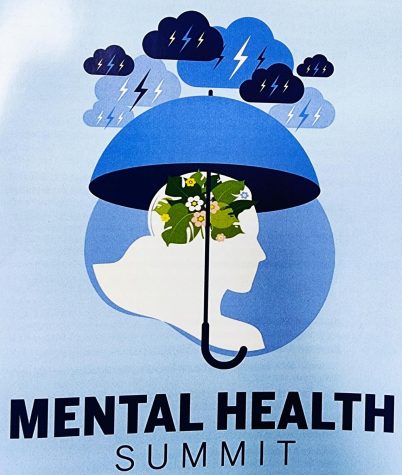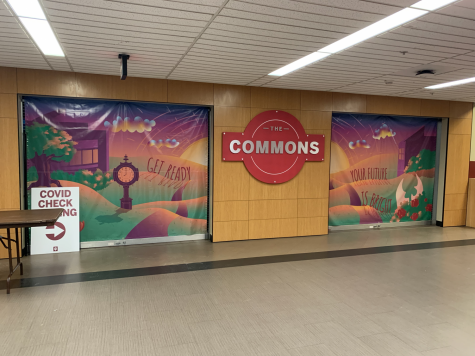Indiana governments combating the opioid epidemic
Local municipalities are suing opioid distributors while the state legislature is calling for prescription and treatment reform
Photo Illustration by Louis Herlihy
In 2016, the opioid epidemic claimed more than twice the amount of lives taken by the United States’ hot-button topic — gun violence. Opioids were involved in 42,249 deaths, and opioid overdose deaths were five times higher in 2016 than 1999, according to the Center for Disease Control. Gun-related deaths claimed 15,636 lives, according to the Gun Violence Archive.
Indiana is one state at the heart of the opioid epidemic, having the 11th highest statewide opioid prescription rate in the country, with a rate of 83.9 prescriptions per 100 persons, according to the CDC.
“This is a very serious problem,” State Sen. Ron Grooms, R-New Albany, said. “Although [patients] may be in excruciating pain, the public has to understand that this is serious. [Opioids are] a dangerous substance to be taking and eventually quality of life will become extremely unpleasant.”
Local Governments’ Fight
At a county level, the Indiana counties of Floyd, Clark and Harrison’s prescription rates were among some of the highest in Indiana, according to the CDC. In 2016, Floyd County was the highest of the three — and fourth highest in the state — with a rate of 132 prescriptions per 100 residents. Clark County had a rate of 105 and Harrison County was the lowest with 92 per 100 residents.
All three counties have felt the impact of the epidemic, which is why city and county attorneys have decided to fight back against the “big three” wholesale drug distributors — AmerisourceBergen, Cardinal Health and McKesson Corp. — in hopes for changing how opioids are prescribed and distributed throughout the state.
The city of Jeffersonville filed suit against the distributor companies in November 2017, after seeing an increase of effects from the epidemic in the years prior, according to Merkley.
“We are one of many governmental entities, not just in the state of Indiana, but pretty much throughout the country, who have filed a lawsuit against the distributors of the opioid painkillers,” Les Merkley, Jeffersonville city attorney, said. “We have not filed anything against the the makers of the opioids, right now we’re just concentrating on the distributors.”
The city of Jeffersonville took note from the lawsuit filed by the Louisville Metro government three months prior in August 2017.
“[We studied] the Louisville Metro lawsuit, and we’re using the same law firm,” Merkley said. “It’s one law firm representing many, many governmental entities. So we looked into seeing what was the best avenue for us to pursue and we decided this was the best.”
New Albany and Harrison County are also among several municipalities in Indiana to have filed suit.
J. Otto Schalk, Harrison County prosecutor, is not heading the lawsuit, but has been combating the opioid epidemic for years in the county.
“A prosecutor’s role is somewhat limited, but our county has retained Taft, Stettinius & Hollister,” Schalk said. “They are the firm actually representing [the county] and it is similar to a product liability suit. They’re specialized to handle [the suit].”
Harrison’s lawsuit cites the recklessness of the opioid distribution companies for sending such a high volume which could not be justified by any conceivable medical need, but could only be explained by a rapidly expanding black market for opioids.
“Despite the clear evidence before their eyes … these wholesale distributors continued to push their substances into the community, willingly and knowingly becoming participants in the black market they were fueling,” the Harrison County lawsuit said.
Each of the “big three” distributors have responded to other publications when asked to comment on the lawsuits.
Cardinal Health responded in an email to the Courier Journal, saying, “it will ‘vigorously’ defend itself in the lawsuit, which it characterized as a misguided ‘copycat’ suit.”
Merkley said there are many people to be blamed for the epidemic.
“There’s obviously plenty of blame to go around [regarding the epidemic],” Merkley said. “The bottom line is the buck stopped with the distributors from a legal standpoint because, by federal law and federal regulation, they had a duty to regulate how many of these opioids were being distributed to doctors and to pharmacies.”
Schalk echoed a similar sentiment, agreeing there are multiple areas of blame for the epidemic.
“Generally speaking, there’s blame to go around. I think this has been a multi-faceted problem,” Schalk said. “I think there’s been prosecutors to blame, I think there’s been judges to blame, I think there’s bad doctors to blame and I think there’s pharmaceutical companies to blame.”
Merkley said the main goal of the lawsuit is compensation for the city of Jeffersonville, due to the amount of additional resources being allocated to stem the epidemic.
“We have to pay overtime. We have to pay for personnel. We have to pay,” Merkley said. “It puts a strain on the city budget to deal with this and it’s getting tougher every day.”
Epidemic Awareness
Merkley and Schalk have not seen the epidemic through the same lens, but both have noticed the stranglehold it has had on their communities.
Merkley said he has seen how much the epidemic is costing the city’s taxpayers due to all the runs first responders have to make from opioid-related incidents.
“It has impacted the city of Jeffersonville because we are having to expend many, many resources to deal with this crisis on a daily basis,” Merkley said. “On average, our fire department is making at least four or five runs due to an opioid incident, every day. It’s costing taxpayers money because we’re having to spend money for our personnel to be out on the streets dealing with this.”
Schalk has worked diligently in his seven years as prosecutor to combat the epidemic, but his work goes far beyond the county prosecutor’s role.
When Schalk took office in 2011, Harrison County had a prescription rate of 106 opioid prescriptions per 100 residents. In 2012, the rate rose to a peak of 119, but has fallen every year through 2016.
Schalk said he believes the prescription rates have fallen due to the prosecution of doctors with bad prescribing habits.
In 2013, Schalk and the Indiana Attorney General’s office opened an investigation for Medicaid fraud on Paul Kelty, a Corydon OB-GYN at the time of the investigation. Kelty was found guilty in 2015 and received an eight-year prison sentence.
“I think that probably sent a pretty clear message to the medical community: ‘hey, you know what, we’re going to be held accountable,’” Schalk said.
In April 2017, Schalk, with the help of local media firm Digital IT, released the “Hit of Hell” online documentary about the reality of opioid and heroin use. A year after its release, it has more than 57,000 views and 1,800 shares on Facebook.
“The thought behind the documentary was that if we can get to kids before they had gone down [the addiction] route, if we get to a middle school or a high school and have them recognize how scary these little prescription pills are, if we can have them walk away from watching that documentary, and they are as scared as we are of [the pills], then we’ve accomplished something,” Schalk said.
The impact the documentary has on young, impressionable minds is noticed by Schalk. He truly enjoys when kids feel comfortable enough to open up to himself and others after showing the documentary in schools.
“We’re getting a lot of kids come up and say they’ve been experimenting or they’ve got problems [with opioids], that’s made it worthwhile,” Schalk said. “That’s when we know we’ve made some meaningful change in our community.”
Schalk also traveled to Washington to speak with the U.S. Senate about the epidemic in January 2018.
“One of the recurring themes was doctors over-prescribing opioids — why do we need to prescribe [patients] oxycodone when Ibuprofen can be just as effective? I think that’s become a talking point on a national stage,” Schalk said. “I’m certainly honored to be a part of that stage.”
Trickling Up?
Indiana’s state legislature is also working to combat the opioid epidemic, but taking a different approach than the local municipalities’ lawsuits. The lawsuits have not gone unnoticed; however, there has not been any similar action taken by the state.
“I think [the state] notices them,” Grooms said. “I don’t think there’s any effort at this time to aggressively pursue any lawsuit by the state of Indiana, not that I’m aware of.”
The state legislature recognizes that while settlements could be reached in the future, the cases could drag out for years in federal courts.
“I’ve been following coverage of the various lawsuits,” State Rep. Ed Clere, R-New Albany, said. “But my concern is more for what we can do to help people now and recognizing that any settlement or settlements, may be years in the future.”
Clere drew a parallel to the Master Settlement Agreement between 46 state Attorneys General, five U.S. territories, the District of Columbia and the five largest U.S. cigarette manufacturers. He said while it’s good a settlement was eventually reached, it did nothing to help the people who had been harmed.
“If there’s an opportunity for a legal settlement, then we should pursue that as appropriate, but that can’t be [the state’s] primary strategy,” Clere said. “The tragic fact is no amount of money will bring back people whose lives have been lost, and no amount of money can repair the incalculable damage which has been done to individuals and families and communities.”
Fighting for the State
Clere and Grooms have both been huge proponents of the need for reform to help stem the opioid epidemic in the Indiana Senate and House of Representatives.
In 2013, Grooms, a retired pharmacist, authored a bill to change physician prescribing habits for opioid narcotics. Senate Bill 471, which became law in 2014, required patients to be enrolled in a pain management program, limited the number of prescriptions which could be written and limited the initial supply of an opioid narcotic to seven days.
“Prescribing habits have changed dramatically, almost a complete 180 degrees,” Grooms said. “Physicians are now refusing to write prescriptions for [patients] unless they’re in excruciating pain, and after three months, they must enroll in a pain management program if they’re going to continue to receive prescriptions.”
Grooms also mentioned INSPECT — Indiana’s controlled substances monitoring program. The program allows physicians to look for a trend for potential addiction by looking at the patient’s prescription history.
“[Physicians] have to access the INSPECT program to see if the patient is receiving any controlled substances or being prescribed by any other physician,” Grooms said.
Clere said he believes treatment reform is the main area the state legislature should focus on going forward in battling the epidemic at the state level.
“Treatment is the biggest issue because we continue to lack adequate treatment resources, especially inpatient treatment,” Clere said. “People who need a residential treatment option too often find there’s nothing available — either nothing in their community, nothing they can afford or nothing with available beds.”
The need for treatment will not come cheap, but Clere emphasized it is the most important issue to address.
“If we’re going to provide the necessary level of treatment, it’s going to be very expensive,” Clere said. “But that is the immediate need because there are so many people who are suffering from addiction.”
Harm reduction for current opioid users goes alongside treatment. The syringe exchange programs across the state play a huge role in reducing harm for current users and halting the spread of disease in the community.
“When you look at the long term treatment cost of a Hepatitis C or HIV versus the cost of providing clean syringes, there’s no comparison,” Clere said.
In 2017, Indiana had a net loss of one syringe exchange program, opening a new program in Tippecanoe County, but losing the two in Lawrence and Madison counties.
Clere said he believes the misinformation and fear-mongering about the syringe exchange programs has hampered its ability to succeed across the state.
“The question isn’t whether they’re going to inject. The question is whether they’re going to inject using a clean needle or a dirty needle,” Clere said. “Once that is understood, then syringe exchange starts to make a lot more sense.”
Naloxone is another harm reduction method Clere said he would like to see become more widely available for those suffering from addiction.
Jerome Adams, former Indiana health commissioner and current U.S. Surgeon General, recently released a public health advisory to urge more Americans to carry the potentially life-saving medication which can reverse the effects of an opioid overdose.
“It’s tragic when someone who could have been saved by naloxone dies of an overdose because it wasn’t available,” Clere said. “Naloxone is a miracle drug which causes someone who may be moments away from death, to have a second chance.”
The fight to end the epidemic is long from over. Through policy reform, retribution and raising awareness, Indiana’s governments are doing what they can to combat the epidemic.
If you, or anyone you know, is struggling with opioid addiction, you can call the Substance Abuse and Mental Health Services Administration’s National Helpline at 1-800-622-4357.










